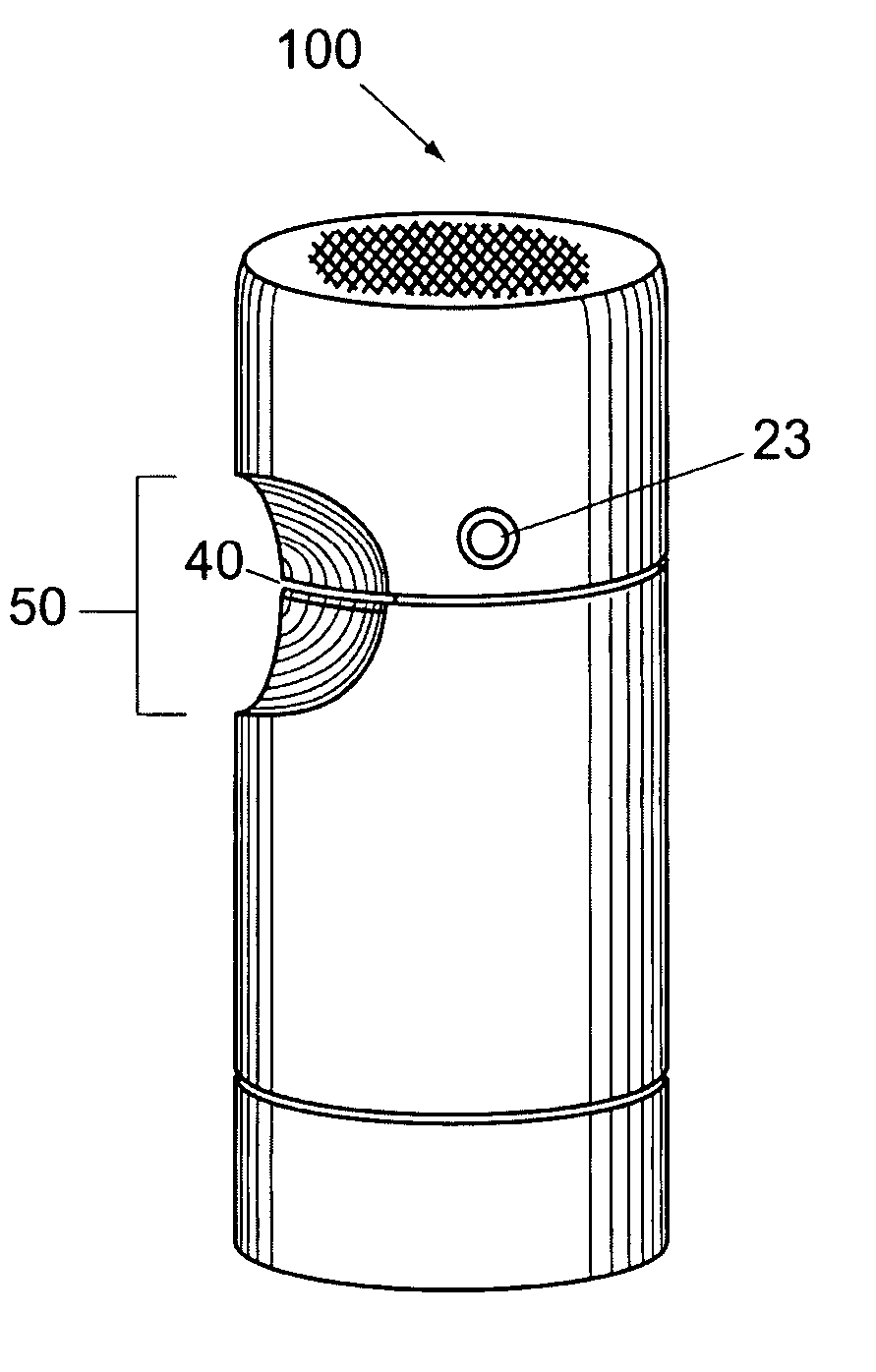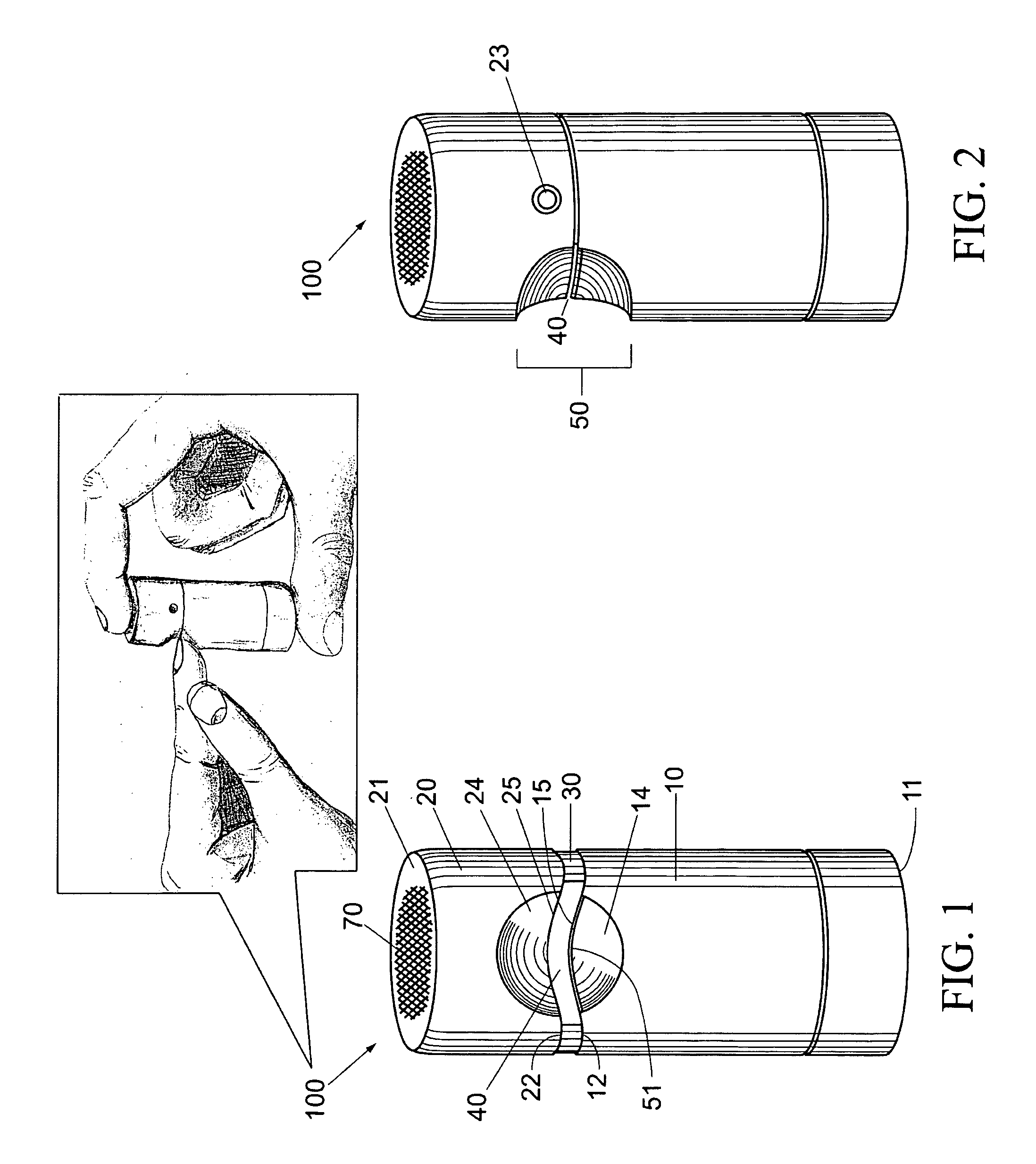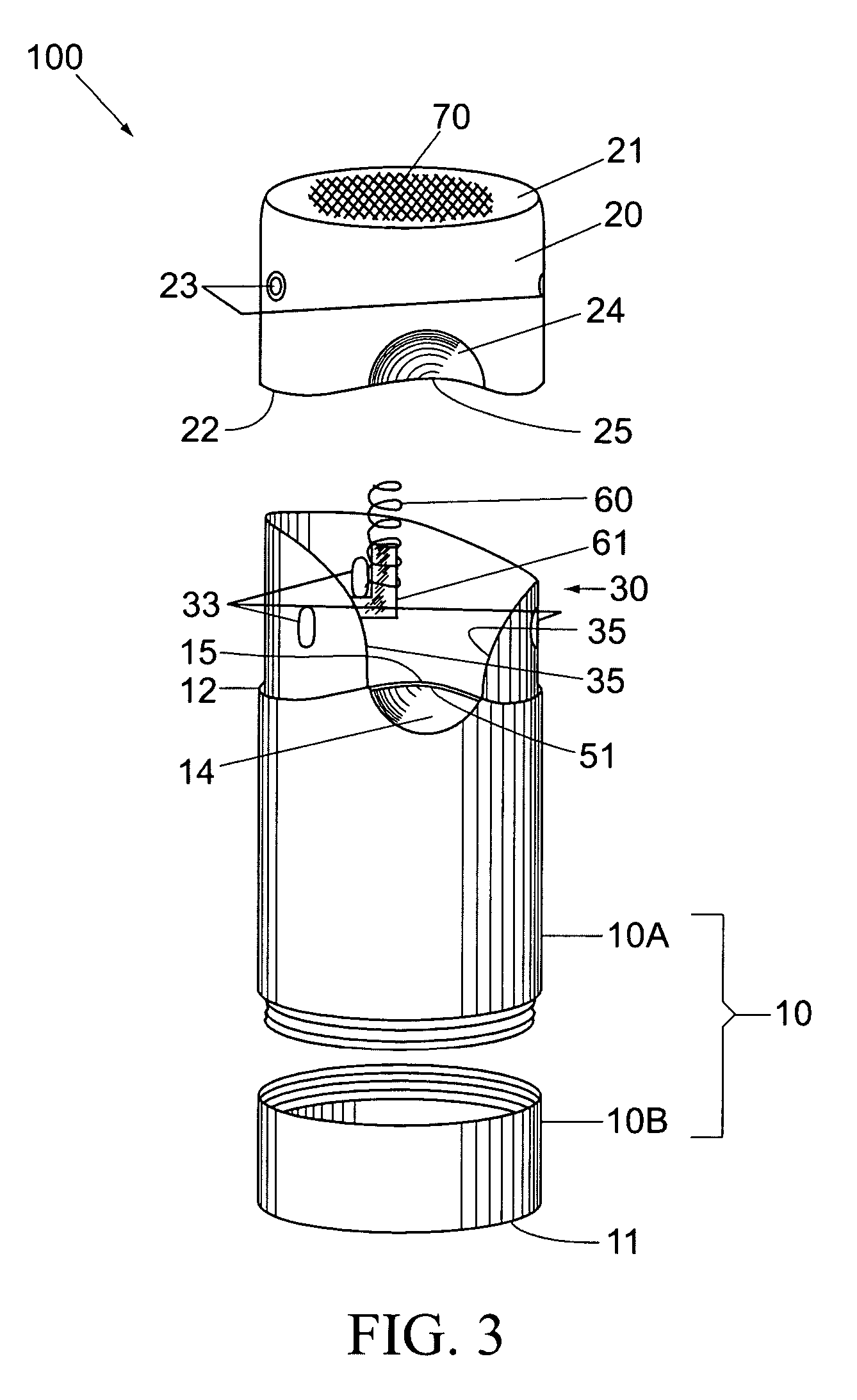Sanitary nail clippers
- Summary
- Abstract
- Description
- Claims
- Application Information
AI Technical Summary
Benefits of technology
Problems solved by technology
Method used
Image
Examples
Embodiment Construction
[0021] Referring to FIG. 1, the present invention is a sanitary nail clipper 100, generally comprising first and second hollow cylindrical housing sections 10, 20, each having substantially the same diameter and with opposing open ends 12, 22 having facing annular edges. The facing edges of the first and second housing sections 10, 20 are further defined by corresponding indentations that define concave lips 14, 24, the facing edges within the concavity being sharpened to form opposing cutting edges 15, 25. A tubular guide / connector 30 having an external diameter conforming to the interior of the first and second housing sections 10, 20 is fixedly anchored in the second section 10 and is slidably inserted into the first housing section 20. When the first and second housing sections 10, 20 are interconnected by the guide / connector 30 a nail cutting slot 40 is defined, flanked by the two corresponding cutting edges 15, 25.
[0022] As seen in FIG. 2, the contour of the concave lips 14, ...
PUM
 Login to View More
Login to View More Abstract
Description
Claims
Application Information
 Login to View More
Login to View More - R&D
- Intellectual Property
- Life Sciences
- Materials
- Tech Scout
- Unparalleled Data Quality
- Higher Quality Content
- 60% Fewer Hallucinations
Browse by: Latest US Patents, China's latest patents, Technical Efficacy Thesaurus, Application Domain, Technology Topic, Popular Technical Reports.
© 2025 PatSnap. All rights reserved.Legal|Privacy policy|Modern Slavery Act Transparency Statement|Sitemap|About US| Contact US: help@patsnap.com



